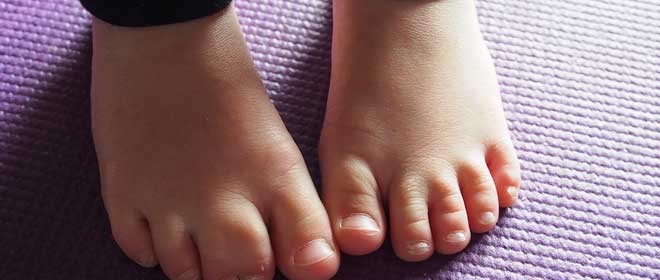
“I changed my attitude, mommy.”
4 year old Esther’s declaration is an example of self-regulation, or a character quality of controlling one’s impulses, and is considered an executive functioning skill.
Just how did one so young develop this capacity? 2 words…wise parenting.
Esther and her siblings have the blessing of parents who take the time to help them process their emotions, actions, and choices. During this particular episode Esther refused to jump in the pool with the other children because she did not want to wear her floaties (the other kids were older and better swimmers so did not need floaties). Her mom gently walked her over to the side away from the crowd, kneeled down in front of her making sure she had her attention, and talked calmly about the choice she had, to swim with floaties or to sit on the side and watch the others swim. Her mom told her that she knew she would enjoy swimming but the choice was hers, swim with floaties or watch the others. And then her mom walked away.
Self-regulation is considered by many to be a critical skill that can lead to more success in school and life (Tough, 2013). It involves socio-emotional and cognitive capabilities that allow a child to do things like plan ahead, monitor herself, and reflect on a situation or decision (see Tools of the Mind for more on self-regulation). And that is exactly what Esther did. After a few minutes of standing by herself just watching the other children swim (her mom had left to run some errands) Esther ran and jumped into the pool; a big smile on her face…and floaties on her arms. When her mom returned a few hours later, Esther immediately dropped the book she was looking at and said proudly, “I changed my attitude, Mommy.” No yelling, pleading, bribing necessary…just processing time and consistent parenting.
Classroom teachers have multiple opportunities each day to help their students develop this life and brain-changing skill. Teaching students that choices result in consequences is a start. Responsive Classrooms materials provide many resources to help teachers work with students to develop rules, routines, and consequences in a way that everyone contributes and buys in.
As teachers are consistent in their discipline approaches – focusing on choices vs. punishments, as well as giving students time to process through talking, journaling, and goal setting, their students have more opportunities to become self-regulated. Fay and Funk (1998) offer other practical classroom insights in their goldmine, Teaching with Love and Logic. Classrooms where executive functional skills training are part of the daily procedures and curriculum are actually changing student’s brains, in particular the development of the pre-frontal cortex (Jensen, 2014).
All teachers would benefit from opportunities to learn more about just how to create these kinds of brain-friendly environments. Start with the references listed here, and also check out Dweck’s (2006) Mindset which offers great insights into how to develop a growth mindset in yourself and your children and learners.
Imagine a world full of children, teens, young adults, and adults who can control their impulses, delay gratification, make a plan and stick to it, and instead of placing blame, accept responsibility for their actions and decisions.
Now that would be a great world to live in – let’s dive in as parents and teachers and make self-regulation a goal for ourselves and our students. Anyone up for a swim?
References
Dweck, C. (2006). Mindset: The new psychology of success. NY: Random House. http://mindsetonline.com/.
Fay, J. and Funk, D. (1998). Teaching with love and logic: Taking control of the classroom. Midpoint Press.
Jensen, E. (2014, March 5). Your students’ number one life skill. Retrieved from http://www.jensenlearning.com/news/your-students-number-one-life-skill/brain-based-teaching/.
Responsive Classrooms, https://www.responsiveclassroom.org/.
Tools of the Mind (2014). Retrieved from http://www.toolsofthemind.org/philosophy/self-regulation/.
Tough, P. (2012). How children succeed: Grit, curiosity, and the hidden power of character. NY: Houghton Mifflin Harcourt Publishing Company.





Erik Smith
Opportunities for reflection, self-monitoring, and appropriate decision making can also be enhanced when a teacher shares control, offers choices within limits, and models empathy.
As referenced in the article, Fay & Funk, authors of Teaching With Love & Logic, provide the following tips to enhance this interaction: 1. Share control; 2. Share the thinking; 3. Balance consequences with empathy; 4. Maintain self respect.
Look to offer reasonable choices that you are willing to enforce. Think win-win. Avoid falling into the trap of making a decision in the heat of the moment. Anticipatory consequences, such as acknowledging a violation has occurred, but only stating that something will be done later on can keep a student preoccupied until the teacher has had time to think of an appropriate consequence.
“The time to offer choices is when you are happy and everything is going smoothly.” Fay & Funk, 1998. Furthermore, the effective teacher administers consequences with empathy and understanding, as opposed to anger and lecture. Fay & Funk. 1998. By modeling an appropriate response that is embedded with self-control, appropriate body language, and effective human interaction, the student’s fear/anger/anxiety response may be diminished or not activated, and the student observes an adult authority model proper social skills.
Moreover, students from poverty or dysfunctional backgrounds are less likely to be exposed to adults modeling befitting resolution skills in their home environments.